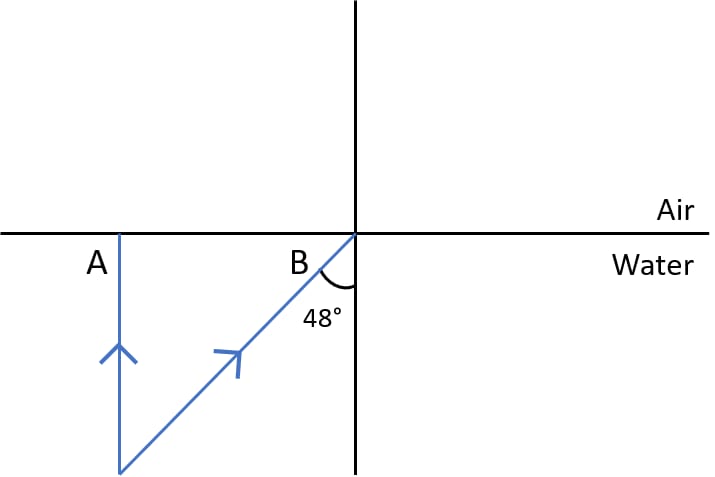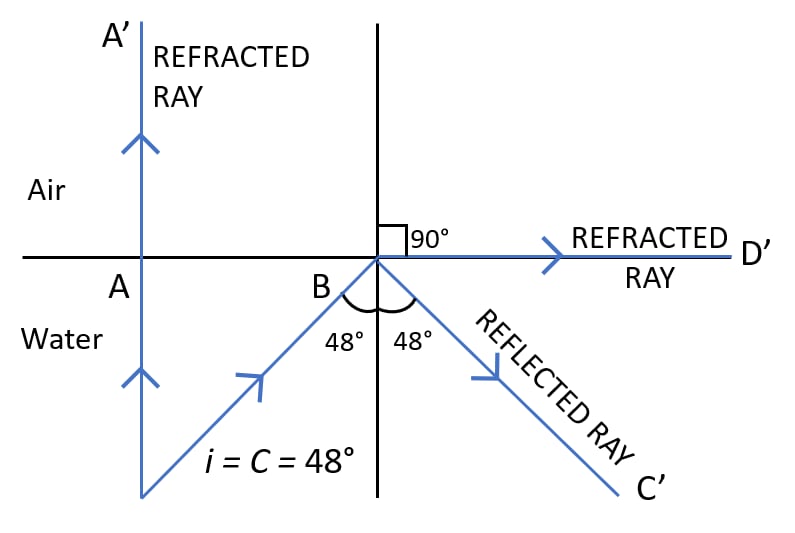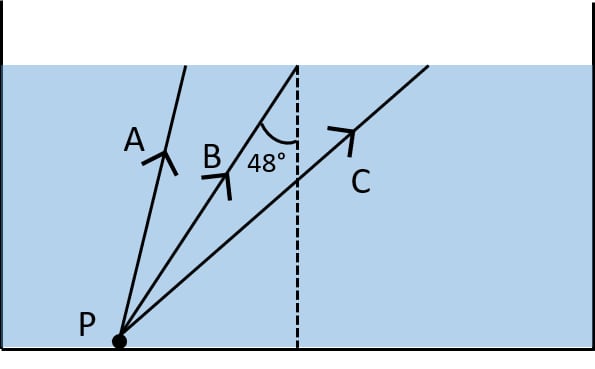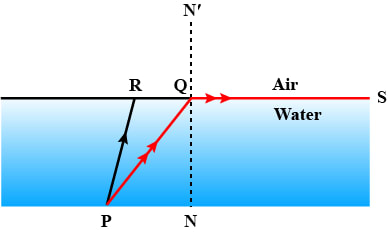Physics
Figure below shows two rays A and B travelling from water to air. If the critical angle for water-air surface is 48°, complete the ray diagram showing the refracted rays for each. State conditions when the ray will suffer total internal reflection.

Refraction Plane Surfaces
94 Likes
Answer
Completed ray diagram with refracted rays labelled is shown below:

Ray A is incident normally at water air boundary so its angle of incidence is 0°. Hence, the refracted ray shown as AA' in the diagram passes undeviated.
For Ray B, the angle of incidence is equal to the critical angle for water air boundary so it is partly reflected as BC' and partly refracted as BD'.
Two necessary conditions for the total internal reflection are —
- The light must travel from a denser to a rarer medium.
- The angle of incidence must be greater than the critical angle for the pair of medium.
Answered By
64 Likes
Related Questions
State two conditions necessary for total internal reflection to occur.
Draw diagram to illustrate total internal reflection.
Figure shows a point source P inside a water container. Three rays A, B and C starting from the source P are shown up to the water surface.

(a) Show in the diagram, the path of these rays after striking the water surface. The critical angle for water-air surface is 48°.
(b) Name the phenomenon which the rays A, B and C exhibit.
In the figure, PQ and PR are the two light rays emerging from an object P. The ray PQ is refracted as QS.

(a) State the special name given to the angle of incidence ∠PQN of the ray PQ.
(b) What is the angle of refraction for the refracted ray QS?
(c) Name the phenomenon that occurs if the angle of incidence ∠PQN is increased.
(d) The ray PR suffers partial reflection and refraction on the water-air surface. Give reason.
(e) Draw in the diagram the refracted ray for the incident ray PR and hence show the position of image of the object P by the letter P' when seen vertically from above.